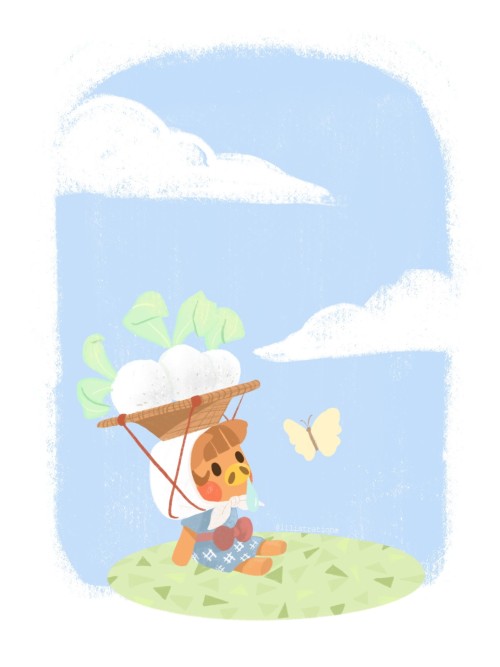Beautiful Work.
Beautiful work.







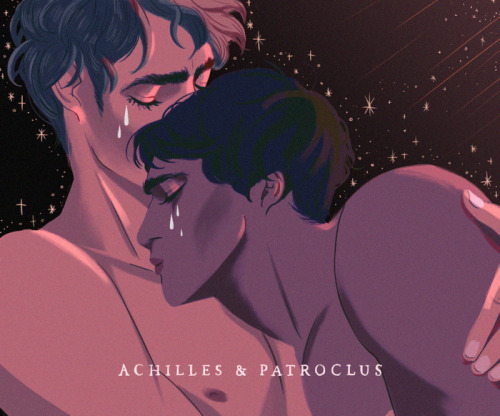


Mohtz on Society6
More Posts from Snowwritings and Others
This just warms my heart. How could this not be canon?
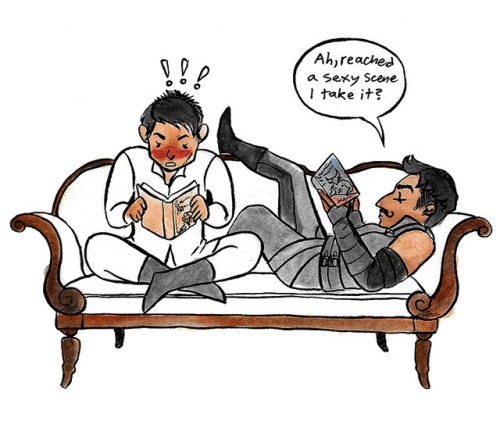


The idea of Cassandra and Dorian being trashy romance novel buddies delights me to no end.
(Especially if they’re the sort of people who can keep a blank face while reading smut but completely lose it over fluff)
I love them! Thank you for the lovely art! ❤
send me a:“♥” and i’ll draw you a picture send me a:“✉” and i’ll handwrite a little message for you send me a:“✎” and i’ll handwrite your url
Keep reading
Send me the most memorable thing I've said. Whether it was just in general or personal.
I wanna know haha😂😂
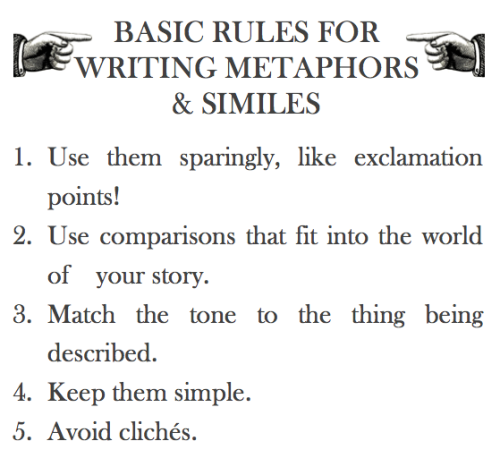
RULE #1: Use them sparingly.
Comparisons draw attention to themselves, like a single red tulip in a sea of yellow ones. They take the reader out of the scene for a moment, while you describe something that isn’t in it, like you’re pushing them out of the story. They require more thought than normal descriptions, as they ask the reader to think about the comparison, like an essay question in the middle of a multiple choice test. They make the image stand out, give it importance, a badge of honor of sorts.
Use too many comparisons and they become tedious.
Elevating every single description is like ending each sentence with an exclamation point. Eventually, the reader decides no one could possibly shout this much, and starts ignoring them.
For these reasons, you should only use metaphorical language when you really want to make an image stand out. Save them for important moments.
RULE #2: Use comparisons that fit into the world of your story.
If you’re writing from the point of view of a character who’s only ever lived in a desert, having that character say, “her look was as cold as snow” doesn’t make much sense. That character isn’t likely to have experienced snow, so it wouldn’t be a reference point to them. They’d be more likely to compare the look to a “moonless desert night” or something along those lines.
Using a comparison that ties to the character’s history or the setting of the story also do work to build the world of the story. It gives you a chance to show the reader exactly what your character’s reference points are, and builds the story’s world. If your reader doesn’t know that desert nights can get cold, this comparison informs both the things its describing: the other character’s look and the desert at night.
Here’s a metaphor from The Hitchhiker’s Guide to the Galaxy:
If you took a couple of David Bowies and stuck one of the David Bowies on the top of the other David Bowie, then attached another David Bowie to the end of each of the arms of the upper of the first two David Bowies and wrapped the whole business up in a dirty beach robe you would then have something which didn’t exactly look like John Watson, but which those who knew him would find hauntingly familiar.
He was tall and he was gangled.
This is a bizarre comparison, but it’s also a bizarre story. What’s more, David Bowie is known for his persona “Ziggy Stardust” and songs like “Space Oddity.” Bringing him up in a book about a man from Earth traversing the galaxy makes sense. What’s more it increases both of those aspects of the story: its ties to space and its bizarre-ness. The comparison unifies the story and the language being used to tell the story.
Using comparisons that fit into the world ensures that everything is working to help tell the story you want to tell.
RULE #3: Match the tone to the thing being described.
Or, match it to the way you want the thing being described to come across. It has to match what you want the reader to feel about the thing being described.
Here’s an example from Mental Floss’s “18 Metaphors & Analogies Found in Actual Student Papers” (although I think it’s actually from a bad metaphor writing contest):
She had a deep, throaty, genuine laugh, like that sound a dog makes just before it throws up.
You’re not imagining a laugh right now, are you? You’re imagining a dog throwing up. Whoever this girl is, you’re going to make sure never to tell a joke in front of her.
This is not getting the right point across.
Remember the David Bowies? Remember how the comparison was fun and bizarre, just like the tone of the book is fun and bizarre?
This is not David Bowies stacked on top of one another.
It’s not enough for a comparison to be accurate. It has to bring about the same emotions as the thing it’s describing.
If this is being told from the point of view of a character who hates the laughing character and we’re supposed to hate her and her laugh. It actually does work, but from the use of the word “genuine,” I don’t think this is the case.
Make sure you always pay attention to the tone of the comparison.
RULE #4: Keep them simple.
Don’t use a comparison that requires too much thought on the reader’s part. You never want anyone sparing even a moment on the question: “but how is x like y?”
Here’s another example from that Mental Floss list:
Long separated by cruel fate, the star-crossed lovers raced across the grassy field toward each other like two freight trains, one having left Cleveland at 6:36 p.m. traveling at 55 mph, the other from Topeka at 4:19 p.m. at a speed of 35 mph.
Again, this is a humorous example. It’s supposed to be bad, but many writers have made mistakes like it. They choose two images that don’t have enough in common for the reader to make an easy and obvious comparison between the two. Sometimes, the writer subconsciously acknowledges this, and expands the comparison to a paragraph, detailing the ways the two things are alike.
If you find yourself doing this, take a step back and ask yourself if this is really the best comparison to be using. The best comparisons are the simple ones. All the world’s a stage. Conscience is a man’s compass. Books are the mirrors of the soul.
What about that David Bowie quote, you ask? Douglas Adams broke this rule, but he broke it purposefully to get that bizarre quality to the language. He still avoids reader confusion, the reason for this rule, by bringing the comparison back to its point at the end: “he was tall and he was gangled.”
RULE #5: Avoid cliches.
The best comparisons are fresh ones. No one wants to hear that she had “skin as white as snow” and lips “as red as roses” anymore. The slight understanding it brings to the description isn’t worth the reader’s groans when they realize you just made them read that again.
A cliche is a waste of space on the page. It’s not going to be the memorable line you want it to be. It’s not going to awe the reader.
Good similes in metaphors require some creative thinking.
In the vein of rosy lips and snow-colored skin, here’s a fun example from Harry Potter and the Chamber of Secrets. It’s the poem that Ginny wrote for Harry on Valentine’s Day:
His eyes are as green as a fresh pickled toad,
His hair is as dark as a blackboard.
I wish he was mine, he’s really divine,
The hero who conquered the Dark Lord.
These aren’t comparisons you’re like to have come across before and their originality comes from rules #2 and #3. Rowling needed comparisons that fit in Ginny’s frame of reference. She also needed comparisons that were humorously bad, as they’re being recited by a grumpy creature dressed in a diaper, who is sitting on Harry’s ankles, forcing him to listen.
As a witch at school, blackboards and fresh pickled toads fit Ginny’s frame of reference. Neither are particularly known for being nice to look at, so they fit the tone, too.
Using her character, setting, and tone, using, in other words, her story, Rowling was able to create similes that are unique and memorable.
It’s the same thing Adams did with his Bowie analogy.
If you, too, use your story to inform your language, writing new and wonderful similes and metaphors should be just as simple.


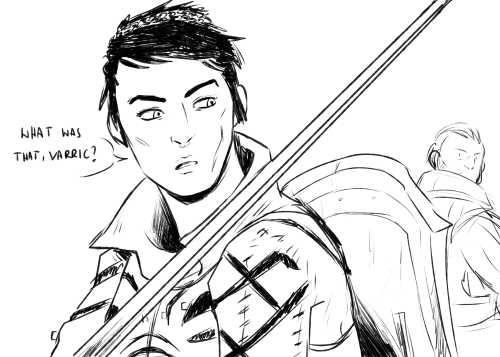
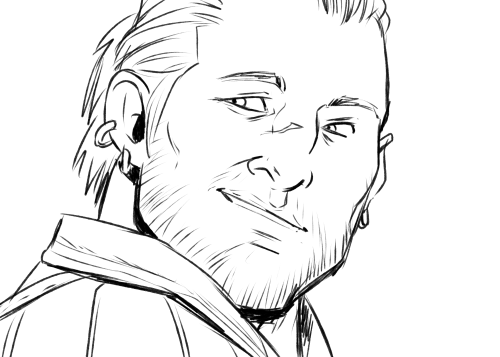
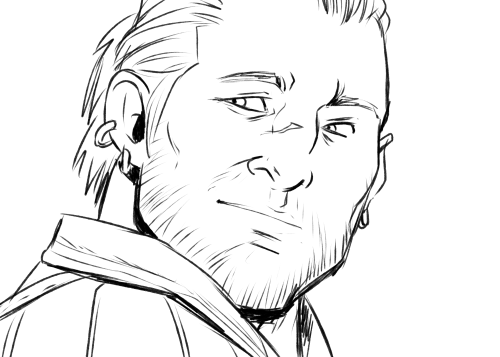

“Nothing Seeker. It was nothing.”
After Adamant. Inspired but this post.





Sorry for the long post! (And low quality pics? Why tumblr?)
Easy answer for number one. The freshman, book two, chapter one is one of a my absolute favourites. It has specifically two scenes with Kaitlyn and Emily that I have always enjoyed. The first being Kaitlyn meeting the mom and their walk back to the dorm and the diamond scene at the winter festival.
What I love about them are that they are simple innocent moments in their relationship. Not a care in the world. They are just enjoying their time with each other. From kaitlyn running up and twirling Emily in the air to their silly snowball fight and kissing in the snow.
They are the moments that we do not get to see anymore. They still happen of course, but we have come to to a point in the narrative where it is simply commonplace and therefore unnecessary to keep mentioning. If anything it would become stale and too repetitive to the reader.
Anyway, the scenes are a little bit of fluff that you can go read in the first chaoter that personally warms my heart and influences my fanfics of the two. They are a raw look into how the two act.

FINAL DAY: QoTD
1.) What’s your favorite Kaitlyn chapter/scene?
2.) 3 things you love about kaitlyn and why?
If you’re European, in a couple of weeks you will be denied any and all access to fandom contents on Tumblr and everywhere else on the internet. Here’s why.
On June, 20th the JURI of European Parliament approved of the articles 11 and 13 of the new Copyright Law. These articles are also known as the “Link Tax” and the “Censorship Machines” articles.
Articles 13 in particular forces every internet platform to filter all the contents we upload online, ending once and for all the fandom culture. Which means you won’t be able to upload any type of fandom works like fan arts, fan fictions, gif sets from your favourite films and series, edits, because it’s all copyrighted material. And you won’t also be able to share, enjoy or download other’s contents, because the use of links will be completely restricted.
But not everything’s lost yet. There’s another round of voting scheduled for the early days of July.
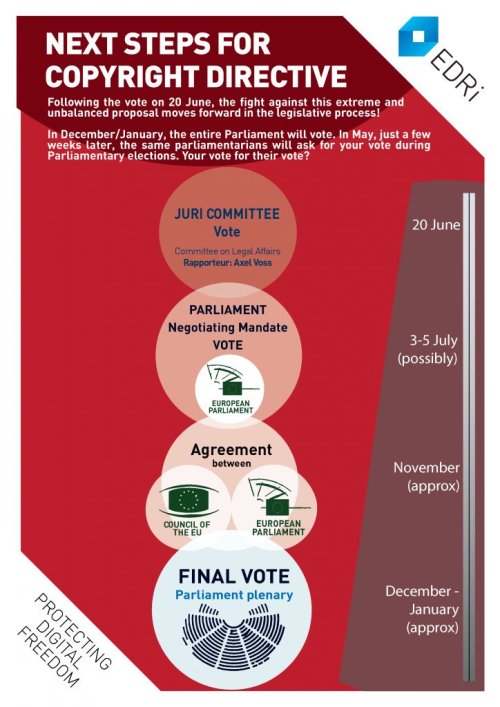
What you can do now to save our internet, is to share these informations with all of your family members and friends, and to ask to your MEP (the members of the European Parliament from your country) to vote NO at the next round, to vote against articles 11 and 13.
Here you can find more news and all the details to contact your MEP:
https://saveyourinternet.eu
Also, sign and share this petition:
https://www.change.org/p/european-parliament-stop-the-censorship-machinery-save-the-internet?recruiter=50668942&utm_source=share_petition&utm_medium=twitter&utm_campaign=psf_combo_share_initial
We have just a couple of weeks to stop this complete madness, don’t let them dictating the way we enjoy our internet.
#SaveYourInternet now!
Yeah, exactly my thought too. And they are laying on those red herrings too heavily.
So. Beckett took wards from a mirror to have a place for training with his advanced magic. That’s why Atlas saw his bracelet. Because Beckett left the mirror without wards MC fell into it and got into the mirror realm. That’s why he was so distraught after MC disappearance, it was his fault. And that’s why he’s so nice now or at least tries to be.
And other friends suspicious behavior just a red herring and they’re probably planning some party to cheer MC up or something like that.
At least that what I think now, I haven’t finished chapter yet.
-
 geeksthetics reblogged this · 1 week ago
geeksthetics reblogged this · 1 week ago -
 owluna93 liked this · 1 week ago
owluna93 liked this · 1 week ago -
 cherlilyy liked this · 2 weeks ago
cherlilyy liked this · 2 weeks ago -
 yetanothergayemo liked this · 2 weeks ago
yetanothergayemo liked this · 2 weeks ago -
 rosyrituals liked this · 2 weeks ago
rosyrituals liked this · 2 weeks ago -
 alteregodepega liked this · 2 weeks ago
alteregodepega liked this · 2 weeks ago -
 thehappiestmistake reblogged this · 1 month ago
thehappiestmistake reblogged this · 1 month ago -
 amaltheathelast liked this · 1 month ago
amaltheathelast liked this · 1 month ago -
 pcrimepromise liked this · 2 months ago
pcrimepromise liked this · 2 months ago -
 ringthealarm911 liked this · 2 months ago
ringthealarm911 liked this · 2 months ago -
 anticute-marshmallowmars reblogged this · 3 months ago
anticute-marshmallowmars reblogged this · 3 months ago -
 jackedjacket reblogged this · 3 months ago
jackedjacket reblogged this · 3 months ago -
 iaceofbladesi reblogged this · 3 months ago
iaceofbladesi reblogged this · 3 months ago -
 iaceofbladesi reblogged this · 3 months ago
iaceofbladesi reblogged this · 3 months ago -
 iaceofbladesi reblogged this · 3 months ago
iaceofbladesi reblogged this · 3 months ago -
 iaceofbladesi liked this · 3 months ago
iaceofbladesi liked this · 3 months ago -
 fandomsschmandoms reblogged this · 3 months ago
fandomsschmandoms reblogged this · 3 months ago -
 fandomsschmandoms liked this · 3 months ago
fandomsschmandoms liked this · 3 months ago -
 unofficialdragon reblogged this · 3 months ago
unofficialdragon reblogged this · 3 months ago -
 gamelpar reblogged this · 4 months ago
gamelpar reblogged this · 4 months ago -
 flowerfemmes reblogged this · 4 months ago
flowerfemmes reblogged this · 4 months ago -
 expresswaytopurgatory liked this · 4 months ago
expresswaytopurgatory liked this · 4 months ago -
 lynchiancowboy liked this · 4 months ago
lynchiancowboy liked this · 4 months ago -
 alwaysbuythebook reblogged this · 4 months ago
alwaysbuythebook reblogged this · 4 months ago -
 zestzing reblogged this · 4 months ago
zestzing reblogged this · 4 months ago -
 asflya liked this · 5 months ago
asflya liked this · 5 months ago -
 reddeadcoquette reblogged this · 5 months ago
reddeadcoquette reblogged this · 5 months ago -
 sittinginsunflowers liked this · 5 months ago
sittinginsunflowers liked this · 5 months ago -
 nezoriy liked this · 5 months ago
nezoriy liked this · 5 months ago -
 robinslaugh liked this · 5 months ago
robinslaugh liked this · 5 months ago -
 mysticnachophilosopher liked this · 5 months ago
mysticnachophilosopher liked this · 5 months ago -
 mysticnachophilosopher reblogged this · 5 months ago
mysticnachophilosopher reblogged this · 5 months ago -
 agatheringofbees reblogged this · 5 months ago
agatheringofbees reblogged this · 5 months ago -
 agatheringofbees liked this · 5 months ago
agatheringofbees liked this · 5 months ago -
 machina-mortis liked this · 5 months ago
machina-mortis liked this · 5 months ago -
 plastikvieh reblogged this · 5 months ago
plastikvieh reblogged this · 5 months ago -
 fluffy-b33z reblogged this · 5 months ago
fluffy-b33z reblogged this · 5 months ago -
 fluffy-b33z liked this · 5 months ago
fluffy-b33z liked this · 5 months ago -
 pink-flamingoo reblogged this · 5 months ago
pink-flamingoo reblogged this · 5 months ago -
 pink-flamingoo liked this · 5 months ago
pink-flamingoo liked this · 5 months ago -
 evolutiontopeacefulmystic reblogged this · 5 months ago
evolutiontopeacefulmystic reblogged this · 5 months ago -
 the-annual-clam reblogged this · 5 months ago
the-annual-clam reblogged this · 5 months ago -
 the-annual-clam liked this · 5 months ago
the-annual-clam liked this · 5 months ago -
 fishingisuniversal liked this · 5 months ago
fishingisuniversal liked this · 5 months ago -
 nemeia reblogged this · 5 months ago
nemeia reblogged this · 5 months ago -
 thisisrubyok reblogged this · 5 months ago
thisisrubyok reblogged this · 5 months ago -
 thisisrubyok liked this · 5 months ago
thisisrubyok liked this · 5 months ago -
 axolotl-my-time-has-come-to-burn liked this · 5 months ago
axolotl-my-time-has-come-to-burn liked this · 5 months ago

Sofia. She/her. Writer, thinker, listener, trans woman, and supporter of the Oxford Comma.
172 posts

